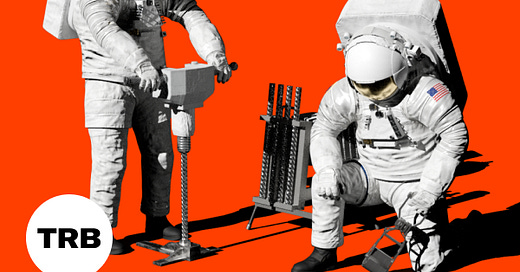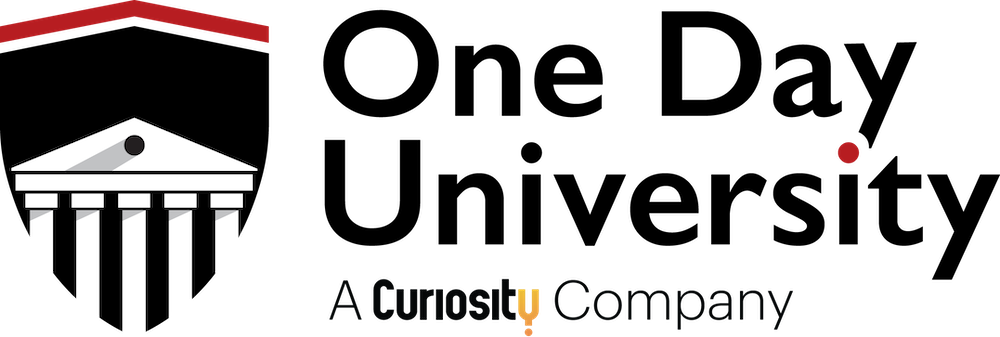Welcome to this week’s issue of The Rebooting, written from a freezing hotel lobby in New York, where I came to moderate a panel at the Business of Home’s Future of Home event. Thanks to Julia Noran and the BoH team for the event. Check them out for a good example of a niche media company in a dynamic category.
Big thanks to this week’s sponsor, One Day University. Over the next four weeks, I’m going to introduce some of the ways One Day University is working with publishers to make their subscriptions more valuable. (On that note, get in touch if you’re interested in sponsoring The Rebooting. The particulars are here.)
A new way to add value to subscribers
The shift to reader revenue requires publishers to develop new approaches. Getting people to pay is hard, getting them to stick around is harder. The best and most obvious approach: increase the value people get from their subscription. That’s what One Day University is doing for publishers. For over ten years years, One Day University has attracted the intellectually curious (your readers!) by offering them a ready outlet for the lifelong learning they are nearly all seeking. One Day University has compiled a library with over 400 lectures given by 200 of the foremost professors, the most popular professors at Yale, Stanford, Harvard and other top universities. Plus, One Day University releases a new lecture for their members every day, including live Q&A. One Day University is partnering with publishers so they can offer their subscribers a free one year trial subscription to One Day University as added value. This helps publishers like Boston Magazine on the East Coast and The Sacramento Bee Newspaper on the West Coast to attract new customers and retain existing ones. Find out more about how One Day University can help you attract and retain high-quality subscribers. To learn more, contact One Day University’s founder Steven Schragis.
The creator economy’s infrastructure problem
The excitement over the creator economy is probably overdone -- the term is so overly broad to be nearly meaningless -- but there is a major trend I believe will stay around for a while. That’s the shift from institutions to individuals. The unbundling of media is seen most clearly in the rise of individuals, as well as collectives of individuals, as media entities. I believe this shift is happening in response to an overall disillusionment with our institutions, probably dating back to the Financial Crisis and accelerated by nearly all of our institutions failing during the pandemic. People are more inclined to trust other people more than some faceless brand.
I have some skepticism about the ability of Substack to create a middle class, although Big Technology’s Alex Kantrowitz notes how Substack is spawning even more individual newsletters.
I wonder how many will continue for, say, a year. Similarly, there are 2 million podcasts. That market too has a barbell effect, with massive hits on one end and an exponentially larger number of modestly popular shows on the other. What’s more, going solo is simply not for most people. I know I sometimes struggle with keeping myself organized -- my mom bluntly told me, “You were never good at that” -- and running a business, even a one-person one, is a learning curve. As miniature media companies, individuals need to do many of the things regular media companies do. They need growth and marketing strategies, brand work, analytics, acquisition and retention strategies, product development and for those not all-in on subscriptions, they need to sell ads, create them, provide great client service (often overlooked) and more.
That’s why, in many ways, I think people underestimate what Substack has been able to do. Substack is a classic case of a business model innovation as opposed to a tech innovation. They’ve created a platform that allows someone in a few minutes to start a media business. That’s magic. That’s akin to what Stripe did with payments or Shopify did with e-commerce. The fees taken for subscriptions are relatively steep, but consider the list above of infrastructure needs. Substack, by virtue of a reliable distribution tech with a built-in business model, takes infrastructure costs to a very low level. Many focus simply on the transaction fees, but Substack takes care of many of those needs -- and I assume it will add other services needed to operate a micro-media business. Too many dismiss this as a simple email newsletter tool. I’m sure these same people would have said Mailchimp was just some way to fire off marketing emails.
This Substack approach is not for everyone because the premise is based on subscriptions; with direct reader revenue, many of the “extras” of publishing melt away. But going all subs has obvious drawbacks in terms of reach and, most importantly, aligning with editorial mission. Personally, I do not plan on switching The Rebooting to subscriptions, not as long as I can work with partners like One Day U to keep this freely available to all those building sustainable media businesses. I am a big believer in aligning the business model with the editorial mission. And to be clear, I believe the mission comes first, but too many start with the business model and work backwards. The downside to this is I’ll need to take on many of those infrastructure costs.
I remember working at Adweek, trying to scrounge up some kind of agency trend story many years ago, and I saw how more clients were shifting accounts to specialist agencies, particularly for digital work. An agency CEO patiently listened before sighing, “Some want best-in-breed, some want one throat to choke.” I suspect many creator businesses will be the same. Some will want a simple, clean model that allows them to focus on creating content and leave the rest. Others will tap into a range of partners and platforms in order to build a more custom “stack.”
For the latter approach to work, infrastructure costs need to come down. Defector Media is showing signs that it could emerge as an early success in the formation of a more equitable media company. It has 40,000 subscribers and $3.2 million in revenue. The one catch: Defector spent $500,000 on technology and design. That’s 15 percent of revenue. A lot of that, undoubtedly, was upfront costs for development and design, but that’s still too high for a simple business model focused on direct payments. Similarly, I was surprised that Puck required $7 million in venture funding to start a micro media company. In “The unbundling of publishing,” I wrote about the infrastructure challenge that could derail the shift from scale approaches. After all, scale tends to improve unit economics.
The reason people gravitated to scale is because the costs of running a publishing business are in all the in-between functions a publisher has. At Digiday, I believe 70% of our people were not involved in the creation of content. Some places are closer to 50%. That’s a lot of cost, even if like Digiday you mostly outsource tech. The only way to rebalance the economics is to use platforms and business models that eliminate the need for many functions to be in-house.
Alternatives to Substack will arise. Substack is an all-in-one platform for an individual to create a media business. Even the most successful are augmenting Substack with other platforms, using a provider like Pallet for jobs, Discord for community and so on. There is an opening for a different approach that allows individuals and micro-media companies to stitch together tools and platforms to address specific publishing functions in a more efficient way -- at a lower cost and without the need to keep adding people. Publishing is a good business, only it needs tech to suck costs out of the business that aren’t core functions.
Over the next few weeks, I’m going to lay out my own approach to these challenges with The Rebooting. As always, I love to hear from subscribers and get feedback, good or bad. Email me: bmorrissey@gmail.com. Also, please share The Rebooting with colleagues you think would find it interesting.



